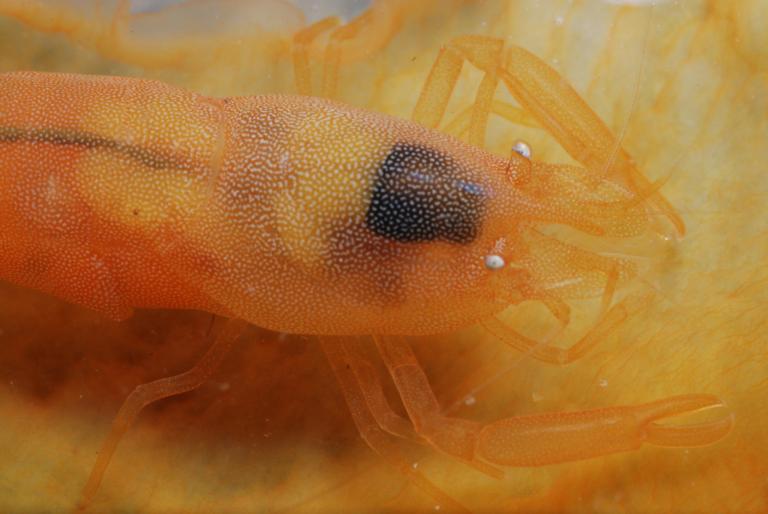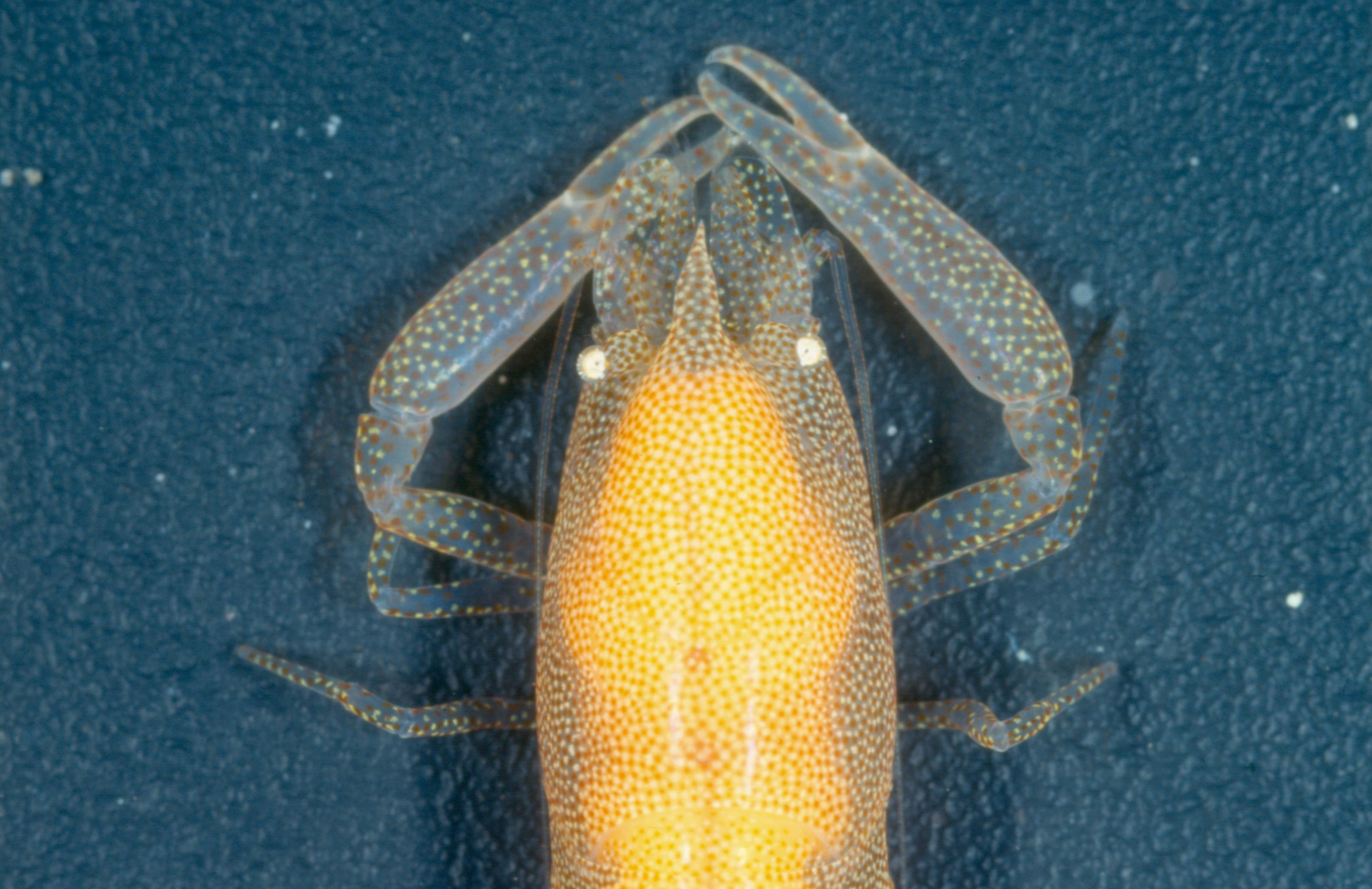
Shrimp researchers Werner de Gier and Charles Fransen had a dilemma: the classification of 'their' group of eighteen tropical shrimp species had to be revised. The species all come from tropical oysters, mussels and sea squirts, so no one has yet taken a good look at these critters. As it turned out, three new scientific names were needed to reclassify the species.
A hiddentreasure
Many animals live in the coral reefs of the Pacific Ocean, but you can't see half of all the different types of life with one glance. Many of the corals, sponges, oysters, and starfish are not only coral reef building animals, but self-contained ecosystems for many smaller animals that live in these hosts. In the oysters, mussels and giant clams lives a group of shrimp that is fully adapted to this environment. They have beautiful color patterns, special adjustments on the legs for extra grip, and a smooth body to prevent getting stuck in the tissue of the host. Strangely enough, the mussel or oyster does not seem to notice. We call this cooperation, in which the host is not affected by its inhabitants, a commensal interaction.
Taxonomy and collection work
For his PhD, Werner took on a project from his supervisor and shrimp world connoisseur Fransen. The group of eighteen shellfish and sea squirt-dwelling shrimps, which hardly anyone had taken a good look at in this century, needed a new classification. In addition, the species also had to be placed in their own family tree, to see when they had occupied this bizarre habitat. “With the help of collection materials, mainly collected by Charles over the course of the last few years, DNA could be taken,” says Werner. “Using this genetic code, we were able to reclassify the species – with interesting findings as a result! ”
The branches of the family tree did not match the scientific names they had been given by other shrimp researchers. “By giving them new names, we can reclassify the species." The classification and naming of the organisms on earth is called taxonomy. "This is often the first step to systematically protect the species," adds Werner.

Newnames
Choosing new names sounds easier than it is. “We based the scientific names on unique characteristics of the species groups,” says Werner, “but that doesn't mean the species shouldn't be given fun or funny names.” A few species were found to have a distinctive 'polka-dot' pattern, so the group was named 'Polkamenes'. The color patterns do raise some questions: why should the shrimps be so beautifully colored, while they remain protected within their host? Another group is named after an old name from 1915 that is still in the literature, 'Ensiger' meaning 'sword bearer'. "The last group is named after an interesting feature, which has only been found by one other expert," says Werner. The shrimps had a drum organ on the underside of their claws, which is why the species have been baptized 'Tympanicheles', which means 'drum claw.' “We don't yet know what the shrimp use the drum for – maybe the structure allows them to absorb vibrations,” says Werner. Similar tympanic organs are more commonly seen in arthropods, but in terrestrial insects such as crickets and grasshoppers.
Moreinformation
- The article Polka-dotted treasures: revising a clade of ascidian- and bivalve-associated shrimp by Werner and Fransen is published in Contributions to Zoology.